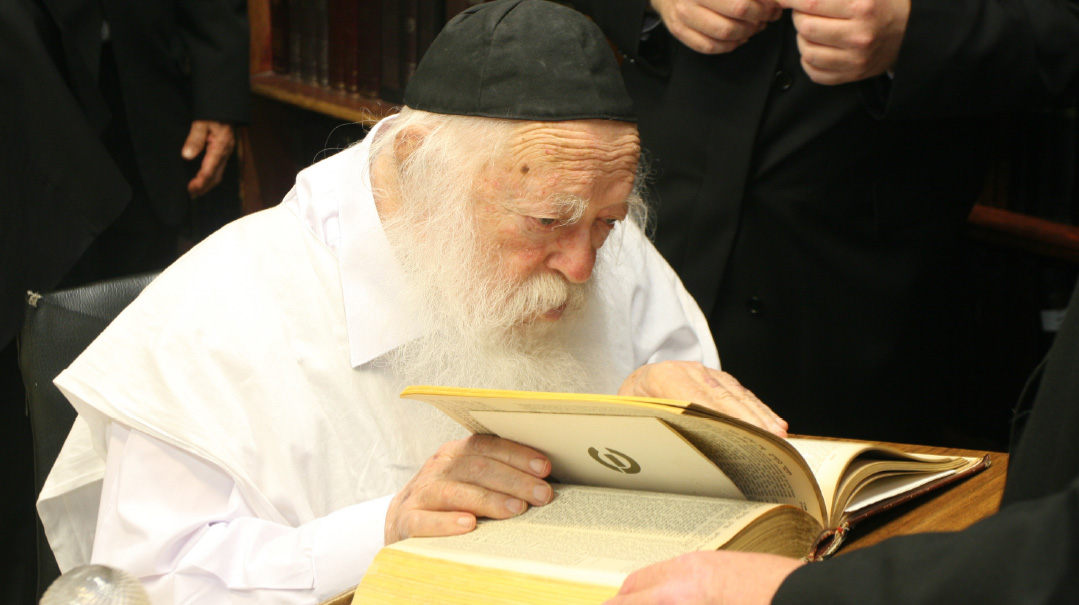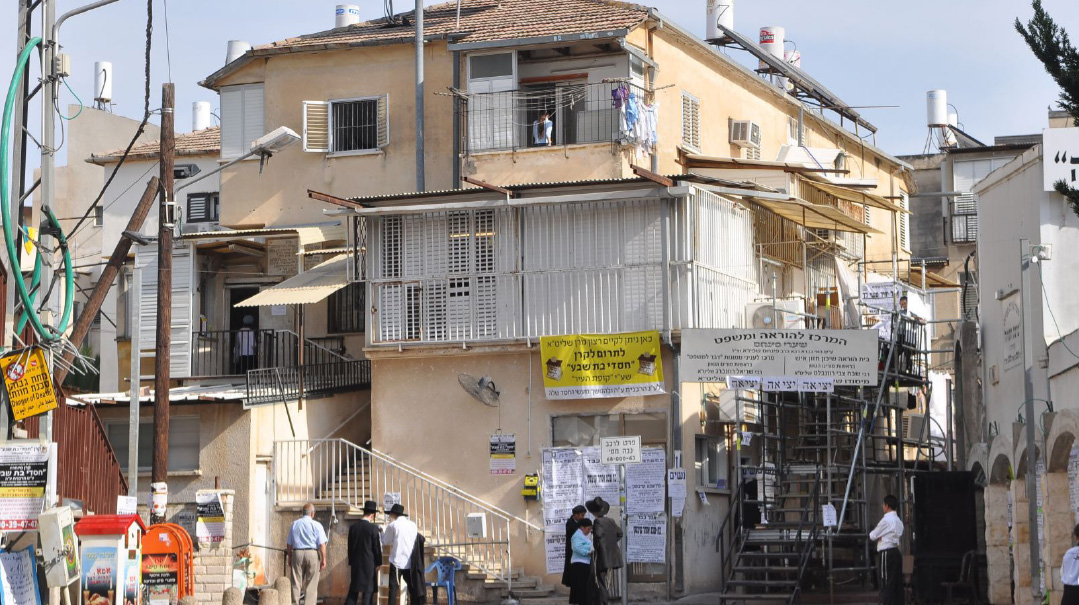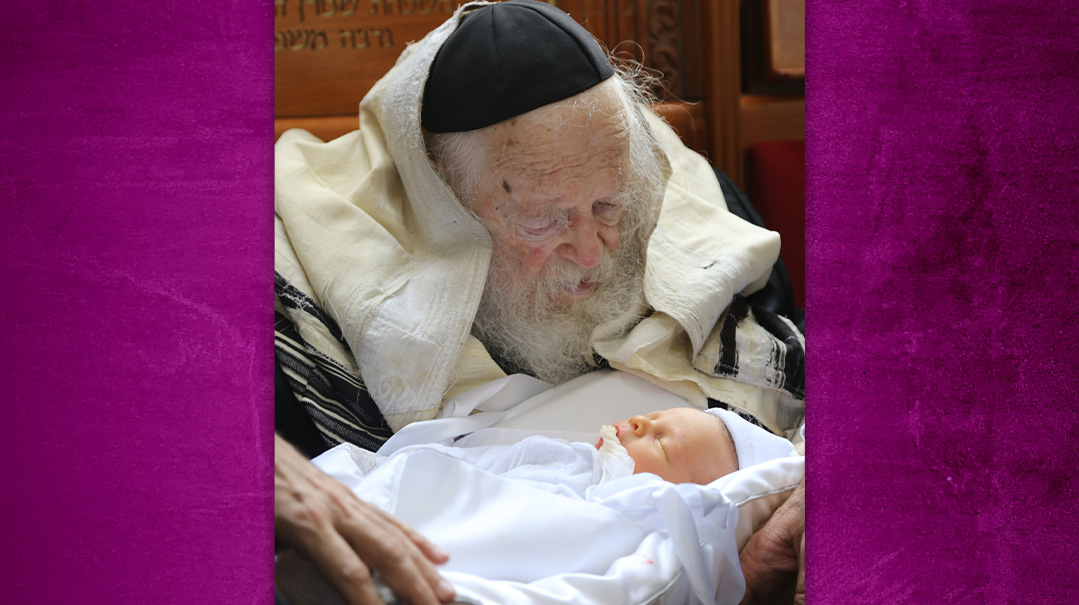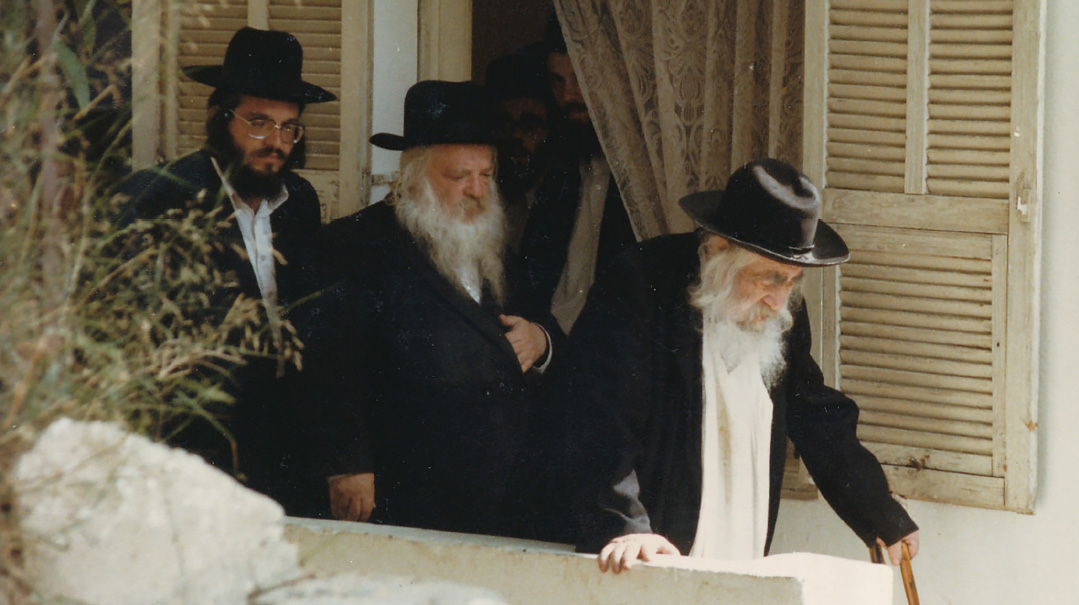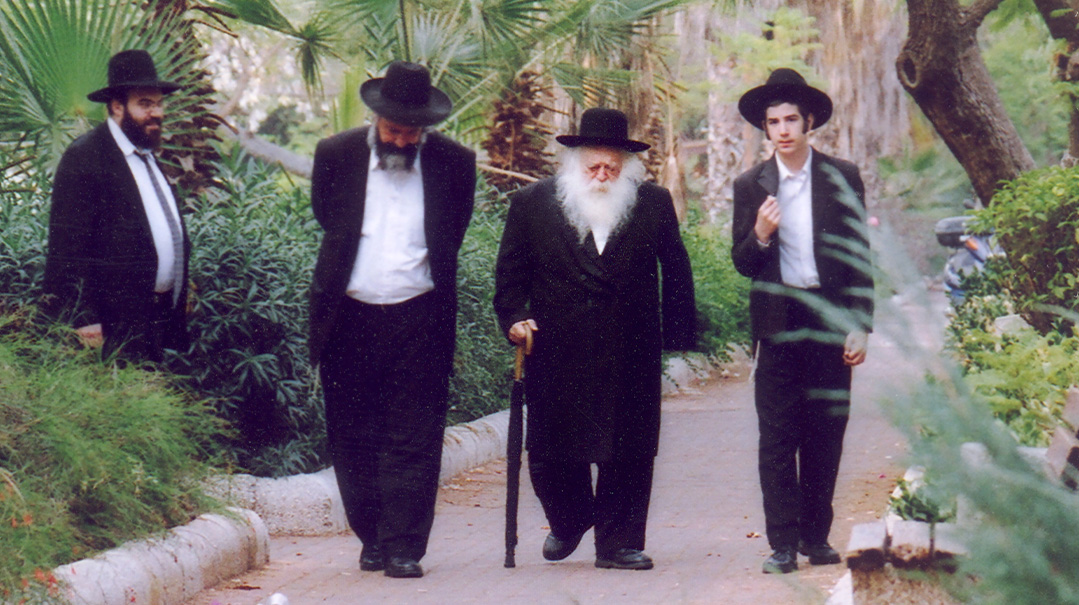Holy of Holies
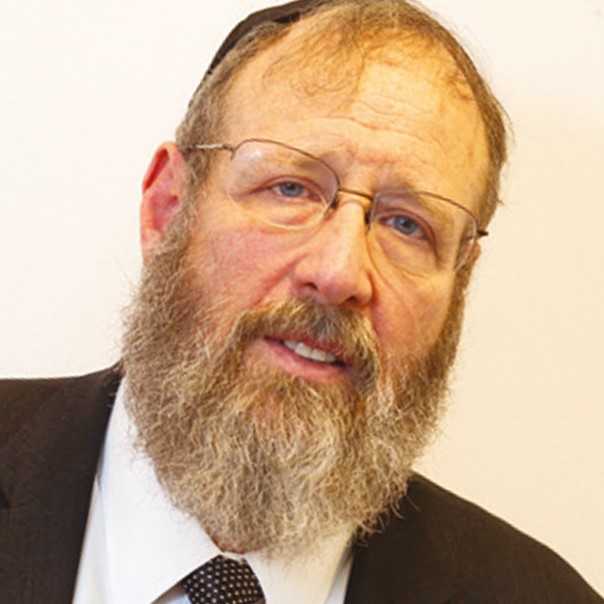
Rav Chaim Kanievsky ztz”l was the Kodesh Hakodoshim of our generation
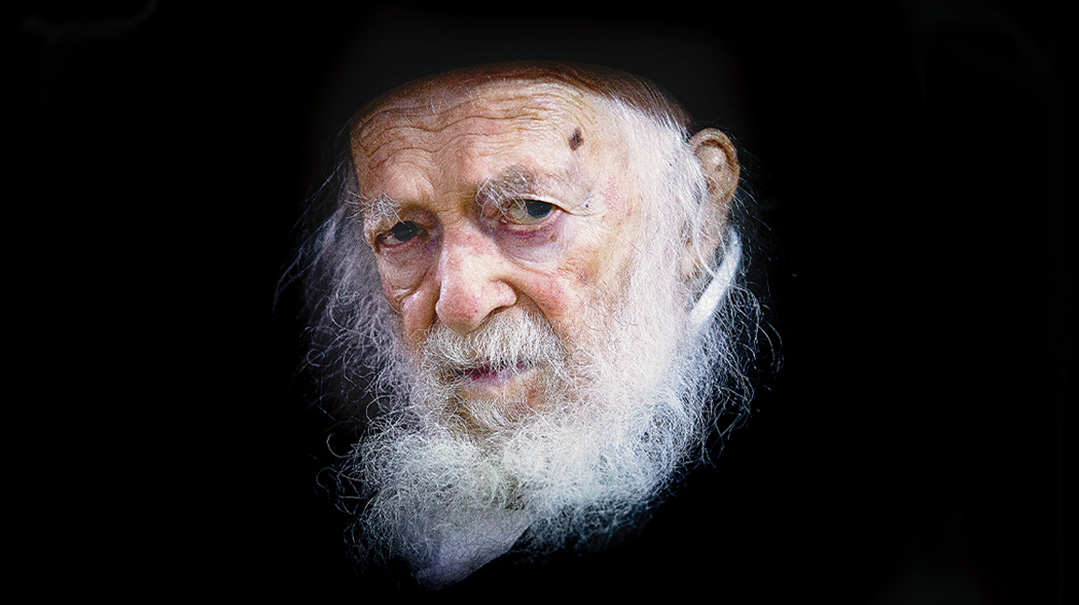
AS
the throngs began pouring in from all corners of Eretz Yisrael, it began feeling eerily like an aliyah l’regel.
Except that aliyah l’regel used to bring us together in the joy of Yom Tov, and now we were brought together with the deep mourning of aveilus. But we were brought together at a point of focus for all the divergent members of Klal Yisrael. A point of focus that brings us back to the times when the Mikdash was that point of focus for Klal Yisrael.
At the very center of Klal Yisrael stood the Mishkan, and later, the Beis Hamikdash. From there, Klal Yisrael drew its spiritual nourishment and inspiration.
The Beis Hamikdash itself consisted of three circles:
The outermost circle, surrounded by a wall, was the courtyard. Within this courtyard stood the Mizbeiach. There, the multitudes of Klal Yisrael would come and bring sacrifices so they could be cleansed of their sins, their leprosy and other impurities. There, they would offer gratitude to HaKadosh Baruch Hu for saving them in times of trouble, and to acknowledge and reach out to Hashem in every way conceivable to a mortal, mundane human being living his everyday life.
Every single Jew — farmer, laborer, businessman and artisan — would return to this spiritual “home” to touch base with HaKadosh Baruch Hu three times a year. Fattened, robust cattle were trotted through the courtyard, where they were transformed into spiritual offerings to Hashem.
Inside this courtyard was the next circle. There stood the Heichal — the Temple building itself. Only the spiritual nobility of Klal Yisrael, the Kohanim, were allowed inside. No animals ever crossed the threshold, and even the blood of animals was allowed in only for extraordinary sacrifices. The avodah in the Heichal involved the refined oil, incense, and the bread of the Lechem Hapanim.
Although outsiders were not admitted into the Heichal, they did catch a glimpse of the otherworldly spirituality therein. We learn that “the brides in Jerusalem would be steeped in the perfume of the incense” (Yoma 39b); “the light of the Menorah testified to the entire world that the Divine Presence dwelled in Israel” (Shabbos 22b); and “The Shulchan with the bread was lifted up three times a year so that the pilgrims outside could witness Hashem’s love for Klal Yisrael” (Yoma 21b). Indeed, the Mikdash proper was a place for the elite, but every Jew could catch a glimpse of it and absorb a sense of the kedushah residing within it.
Finally, we come to the innermost enclosure, the Kodesh Hakodoshim — the Holy of Holies. It was totally closed off, inaccessible to everyone. Even the Kohein Gadol, who entered once a year, did so surrounded by a veil of smoke that obscured everything. Furthermore, no divine service per se was performed within this enclosure except for the Yom Kippur service, the purpose of which was to cleanse the Kodesh Hakodoshim of any sin and impurity that had affected it.
What, then, was the purpose of the Kodesh Hakodoshim, if not divine service?
The answer is that the “divine” can never be tangible to us. True that at its lowest level of expression, the “divine” does becomes an interaction between man and HaKadosh Baruch Hu, but it draws its validity from a place that is beyond human interaction.
The Kodesh Hakodoshim is that “place beyond.” It is the center of everything, and every interaction with Hashem is actualized through its presence, but it itself is “beyond.”
Chazal expressed this concept when they described the Aron’s position in the Kodesh Hakodoshim. It was placed so that the poles by which it was transported created a protrusion into the Paroches — the curtain covering it. Chazal describe this as resembling the “bosom of a woman” (Yoma 54a), hinting to us that the Aron, with the Luchos inside, nourish the entire Beis Hamikdash. Yes, the Kodesh HaKadoshim was veiled and completely separate from us, but in some deep way, it was the source of the kedushah for the rest of the Beis Hamikdash.
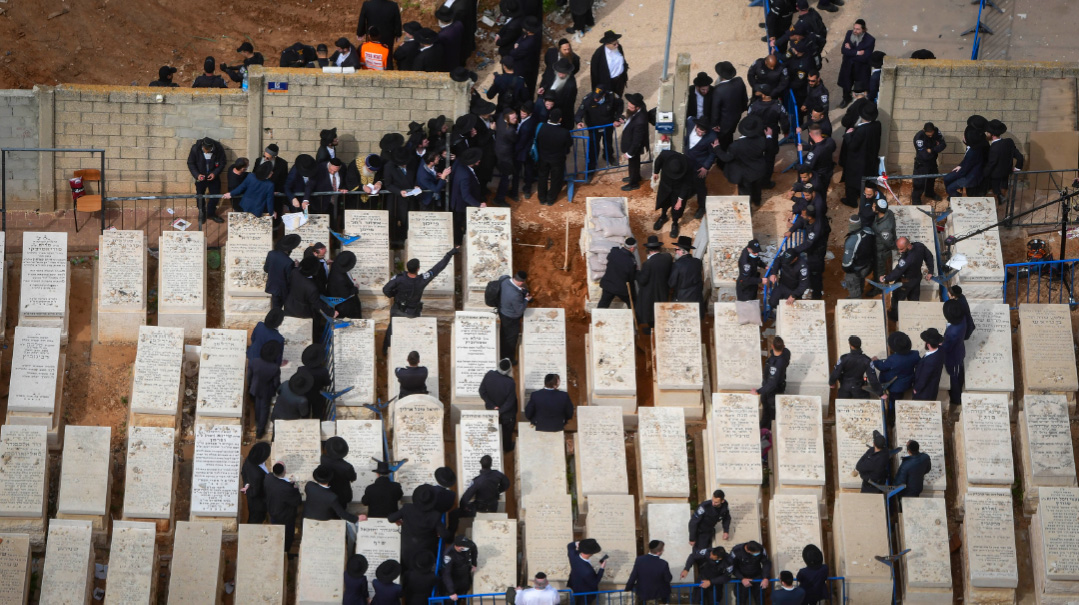
The structure of Klal Yisrael’s spiritual sustenance consists of these same concentric circles.
The outer circle is the spiritual leadership that deals with the mundane and the commonplace: the practical issues of halachah, the challenges of the outside world, the needs and hopes, and pains and sorrows of everyday life. The leaders within this circle are there to teach, guide, rebuke, comfort and inspire.
The next-innermost circle comprises those spiritual figures whose avodah lies within a world that is wholly spiritual. It is a world where the Torah rises above the mundane and takes on a life of its own. This is the place of Shevet Levi — the batei medrash of Klal Yisrael. The outsider catches a glimpse of that world during his years spent in Torah learning, and subsequently, while touching base during Yamim Noraim or yarchei kallah.
And then there is the innermost enclave, the Kodesh Hakodoshim. The inhabitant of this sphere is one who nurtures and sustains the other two worlds, and yet is totally removed from them. A curtain is eternally spread in front of him, never allowing the outside world in. Nevertheless, there is a tiny “protrusion” in that curtain which serves as a constant reminder that this is it source of it all.
Rav Chaim Kanievsky ztz”l was the Kodesh Hakodoshim of our generation. He lived a life that was totally Torah. The curtain that enveloped him shut the rest of world out of his consciousness, and his life was an expression of kedushah that could not be part of this world.
Though his picture was incessantly splattered across the newspapers and his laconic words were repeated endlessly, he was not part of this world in any shape or form. Almost no one entered his realm or understood him. His speech was terse to the extreme, and he never presented his reasoning. In the myriad seforim he wrote, there is no expression of self, only a laser-like homing in on the emes as he saw it. Even his mussar seforim do not betray a hint of self.
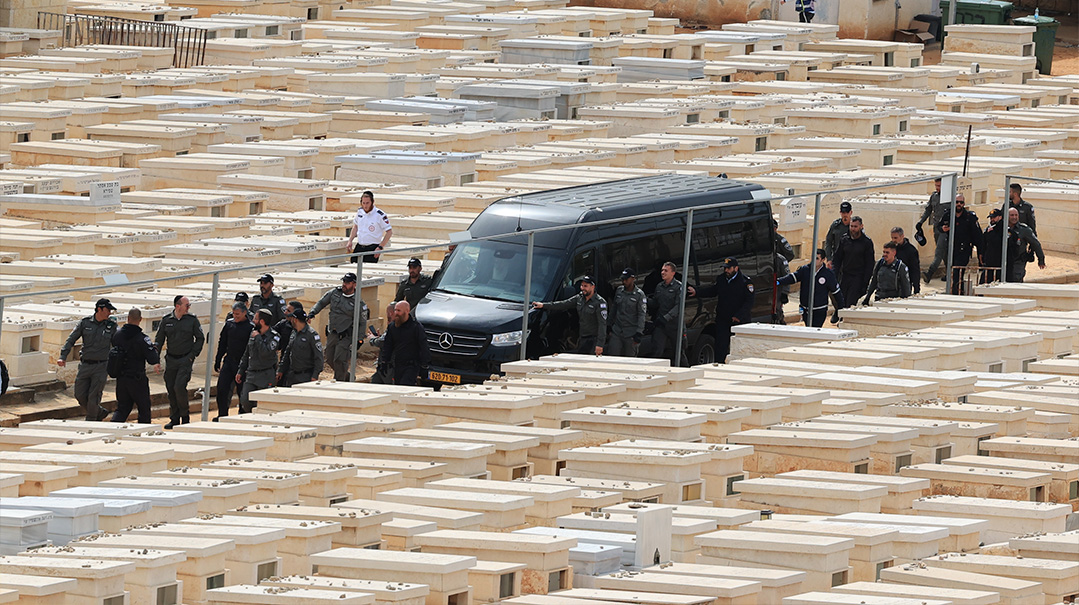
Photo: Eli Cubin
When HaKadosh Baruch Hu presented the Divine presence to Eliyahu Hanavi, He told him that there would first be a wind, then a storm, and then a fire. Hashem would not be present within any of these (Malachi 1:19). Then there would be a “still and barely audible voice,” and that would be Hashem’s presence.
The outermost circle around Hashem is a storm of inspiration and rebuke. It shakes a person to the core. The next, closer circle around HaKadosh Baruch Hu is that of fire, which warms and enlightens. But in the closest proximity to Him there is silence, for those who perceive the sublime cannot express it in ordinary language and words. The words are articulated in a voice too fine for coarse ears to discern.
Rav Chaim lived in that inner circle of silence, and his personality embodied it. This makes our ability to mourn him so difficult. It is natural to mourn someone who guided and comforted, who taught and enlightened, who touched us personally. How, though, do we mourn someone who was forever veiled in a cloak of invisibility and silence? We who never heard a shiur or shmuess from him, nor held any conversation of length with him? Yes, he was so much higher than anyone else, but how does that touch each of us?
The Second Temple did not contain an aron (Yoshiyahu hid it earlier). As a result, other forms of ruach hakodesh disappeared (Yoma 21b). The fire no longer consumed the sacrifices as cleanly as in earlier times, the Urim V’tumim did not respond to requests for guidance, and the sense of Divine Presence faded. Even though no one had ever seen the Aron in the First Temple, its absence was still obvious during the era of the Second Temple: with no aron present in the innermost circle, the light in the outer circles dimmed. Without the generator, the other conduits of spirituality lost their power.
We access Torah and Yiddishkeit through the outer circles. We had no direct connection to Rav Chaim, no matter how many pictures of him adorn our wall, and no matter how many times we might have received a brachah from him. But we fervently believe that all that our generation possesses came through that conduit of pure, unadulterated ruchniyus. That his presence in the innermost circle supplied all the others with Divine light.
Everything has dimmed now. We will feel it. Our children will feel it as well, for we can no longer stand with them on Rechov Rashbam next to the paroches, point at a barely perceptible protrusion, and exclaim, “This is where it all emanates from!”
(Originally featured in Mishpacha, Issue 904)
Oops! We could not locate your form.

